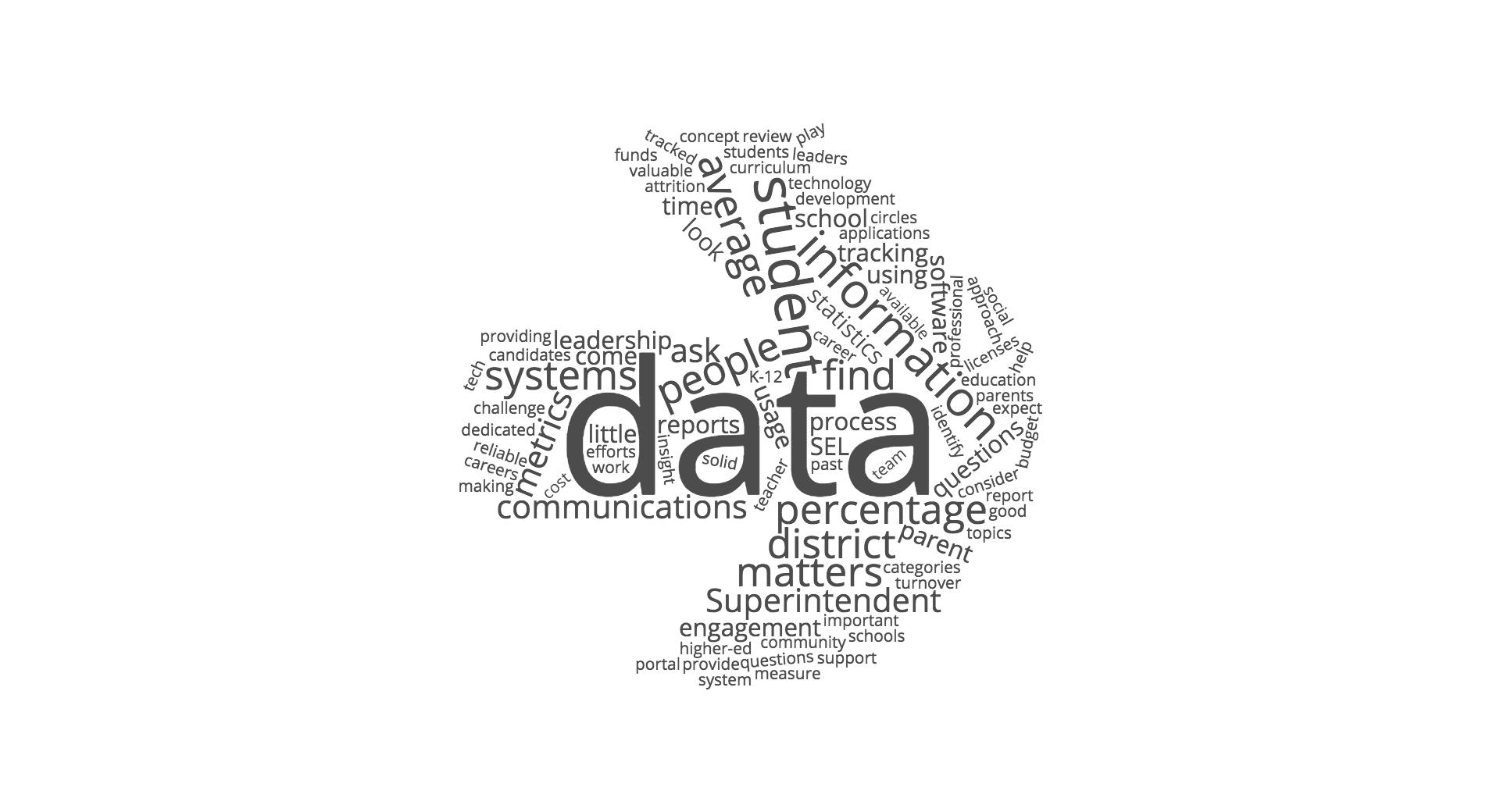
**Editor's note: This article was originally published on eSchool News. See that version here.
From interoperability to dashboards, data accessibility is one of the most prevalent topics in edtech circles these days. For superintendents, simply knowing what to look for can be a challenge.
Some of the more obvious metrics are commonplace on school report cards, websites, and budget presentations. These might look familiar:
- Graduation rate
- Class size
- Free and reduced lunch percentage
- Teacher qualifications
- Enrollment
- Average salary
- Funding per student
- Expenditures per student
Those are all important data points to some, but a treasure trove awaits just a little further beneath the surface. We expect these 15 metrics (categorized under four key categories) to play a larger role in superintendent decision making in the years to come.
Technology usage rate
Why it matters
A recent report on software usage and waste found the education sector to be one of the worst industries at using the tech it’s paying for, with a whopping 47% of enterprise software licenses either unused or rarely used. Many technology budgets are jammed with line items that sounded good at some point, but never really took off. If those funds could be allocated to more meaningful pursuits, the average district could be looking at six figures or more of unexpected funds.Questions to ask
- Which apps, licenses, and hardware haven’t been used at all in the past year?
- What is the average cost per login for your niche, low-user-count applications?
- How much functionality overlap exists between disparate systems?
- What percentage of your larger investments, such as information management systems, is sitting dormant?
Where to find the data
Most tech comes with administrative tools to help identify usage patterns, so your technology team should have little problem pulling that data for you. When built-in reports are not available, surveys can be a valuable way to collect deeper information. The distinction needs to be made between what people think they want, what people say they’re using, and what people are actually using often enough to justify the cost. That’s the gap good data can help you fill.Whole-child support
Why it matters
Social-emotional learning may be the term du jour in K-12 circles, but the concept of schools providing support, encouragement, and services beyond mere academics is a timeless one. Superintendent priorities are often aligned with those of the community, and people are going to be asking about your district’s approach to SEL. What will you tell them?Questions to ask
- What is the average advisory time allotted to students per day, week, and year?
- What is your counselor-to-student ratio?
- How much staffing, professional development, and budget has been dedicated to district-wide communication, curriculum integration, and/or the explicit instruction of SEL skills?
Where to find the data
School counselors are likely doing the bulk of this work today. Find out if they are taking a consistent approach to tracking office visits, interventions, and SEL-related communications. Tracked data is reportable data, and these stats can give you a solid baseline to work from. If it turns out the data is not being tracked or is being tracked differently in each of your schools, you will have uncovered an important opportunity that should be addressed.For those who have built SEL into student schedules, like CHSD 230 in Illinois, attendance data will be available in your student information system. If your efforts have been largely informal to this point, consider coming together with your leadership team to identify areas of improvement in the delivery, tracking, and reporting of this data.
Candidate attrition
Why it matters
Much has been made of teacher shortages, plummeting leadership tenures, and the barriers to entry plaguing the field of education. While school culture, salaries, and a perceived lack of stability all come into play, few districts are measuring the number of potentially high-performing candidates being lost before, during, and after the application process.What to measure
- What is the conversion rate of your digital properties, including your careers webpage, LinkedIn, and job posting/review sites?
- What is the average turnaround time from job posting to offer letter, and how many candidates are withdrawing their applications during that timeframe?
- What are your turnover statistics within the first year of employment?
Where to find the data
Website and social media analytics can provide valuable insight into the behavior of your audience. If your careers page has a 95% exit rate (people leaving the site without taking another action), it may be time for an overhaul. Most applicant tracking systems should produce the reports you need on the hiring process itself. For turnover data, look no further than your human resources / ERP software platform.Parent engagement
Why it matters
The influence of parent engagement on student outcomes is widely recognized, but empirical data on the subject is still not easy to come by. When examining the impact of your school-to-home collaboration efforts and relaying successes to the board and the community, reliable, easy-to-interpret data is critical.What to measure
- How many parents served in some capacity as volunteers for your district last year?
- What percentage of families attended parent-teacher conferences?
- What communication mediums have the furthest reach, and what is the demographic breakdown of those audiences?
- What percentage of parents are regularly logging in to your parent portal?
- What percentage of teachers are providing adequate information about upcoming assignments and curriculum topics?
Where to find the data
Reach, impressions, click-throughs, and social engagement are at the center of any public relations effort. If you don’t yet have a dedicated communications professional on staff, the value in this kind of data is just one of many reasons to consider adding one. Your student information system will be the hub for parent portal, conference, and teacher transparency statistics.Looking ahead
One of the most underappreciated aspects of strong leadership is the ability to ask the right questions. Answers aren’t terribly difficult to find—it’s the unasked questions that pose the biggest risk. Today’s superintendents have access to more data, more research, and more insight than those of the past. Traditional statistics and reports fail to capture that reality, but as data literacy improves, we expect the scope of that information to grow in quantity, quality, and importance.These 15 metrics, and the four categories under which they fall, can provide a solid foundation for annual process and policy review. Which will you focus on?
For more on what's new with data and how it's impacting K-12, visit the Advancing K12 Data Topic Page.
WHAT'S NEXT FOR YOUR EDTECH? The right combo of tools & support retains staff and serves students better. We'd love to help. Visit skyward.com/get-started to learn more.

|
Advancing K12 Staff Edtech Thought Leaders |




